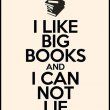1 review for Inkscape is not recommended
These reviews are not recommended because our content quality algorithms have determined them to be less useful for users researching this business. Our content quality algorithm makes decisions based on a number of proprietary evaluation factors, and is constantly updating and improving over time. Even though these reviews are not displayed by default, they still factor into the overall number of reviews and the average rating for the business.
